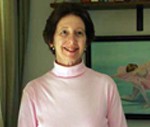By Sheila Orysiek

SAN DIEGO — Those of us familiar with the word “shtetl” often conjure up mental images of a small town in Eastern Europe; the world of Tevye fiddling on the edge of his roof. These memories were handed down by our forebears along with faded pictures of grimy houses and dusty streets. But what was it really like?
In Shtetl, The Life and Death of a Small Town and the World of Polish Jews, (Houghton Mifflin 1997), author Eva Hoffman, originally from Cracow, returns to Poland to explore the history of the Jewish experience in those small towns. Though at one time a third of the population of Warsaw was Jewish, we tend to think of the Ashkenazic (Eastern European) Jewish culture in terms of the shtetl – the small town rather than a large capital city.
Through the years, Poland was often torn apart by the various countries and empires which surrounded it. Thus, it was at different times incorporated into Germany, Prussia, Russia and Sweden. Originally invited into the country by the Polish nobles as early as the 10th century, the Jewish population of Poland was the largest of the country’s many minorities.
It is certainly a complex multi-ethnic history: at times mutually satisfying, often contentious and too often deadly. But, within the small confines of a rural town the two communities, Christian and Jewish, did live side by side, interacted and enjoyed many of the same cultural aspects such as music and food. There was interchange between languages; the Yiddish word “schmata” (rag) comes originally from Polish,
The world of the shtetl was irrevocably changed – not with the slow passage of time – but with the cataclysmic event of the Holocaust. Hoffman meets with non-Jewish survivors presently living in the small towns and presents their views on the disappearance of so many of the people with whom they once shared the space. What does it mean to them? How do they feel about it? How do they remember what happened?
This book is a worthwhile effort to give both an historical as well as a present day view of the reality of Jewish life as it was lived in a shtetl.
*
Orysiek is a freelance writer who specializes in arts and literature. You may comment to her via sheila.orysiek@sdjewishworld.com